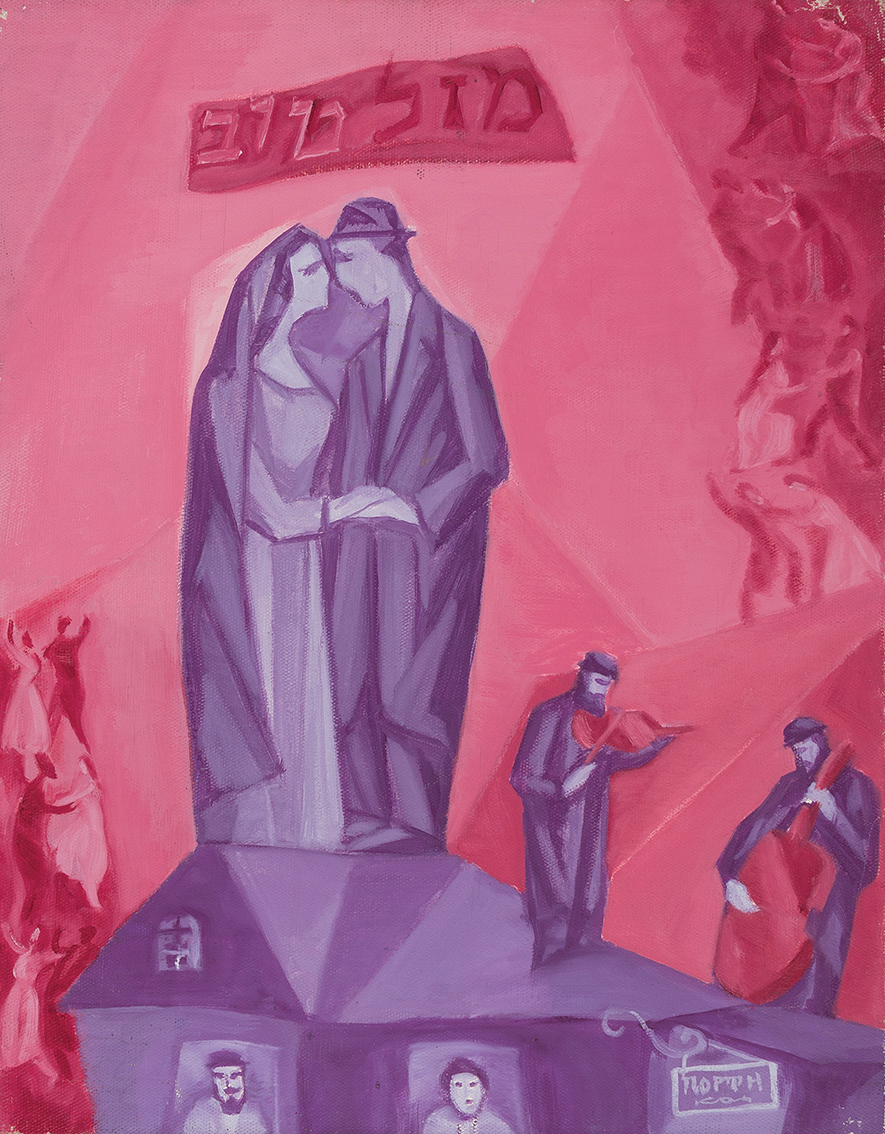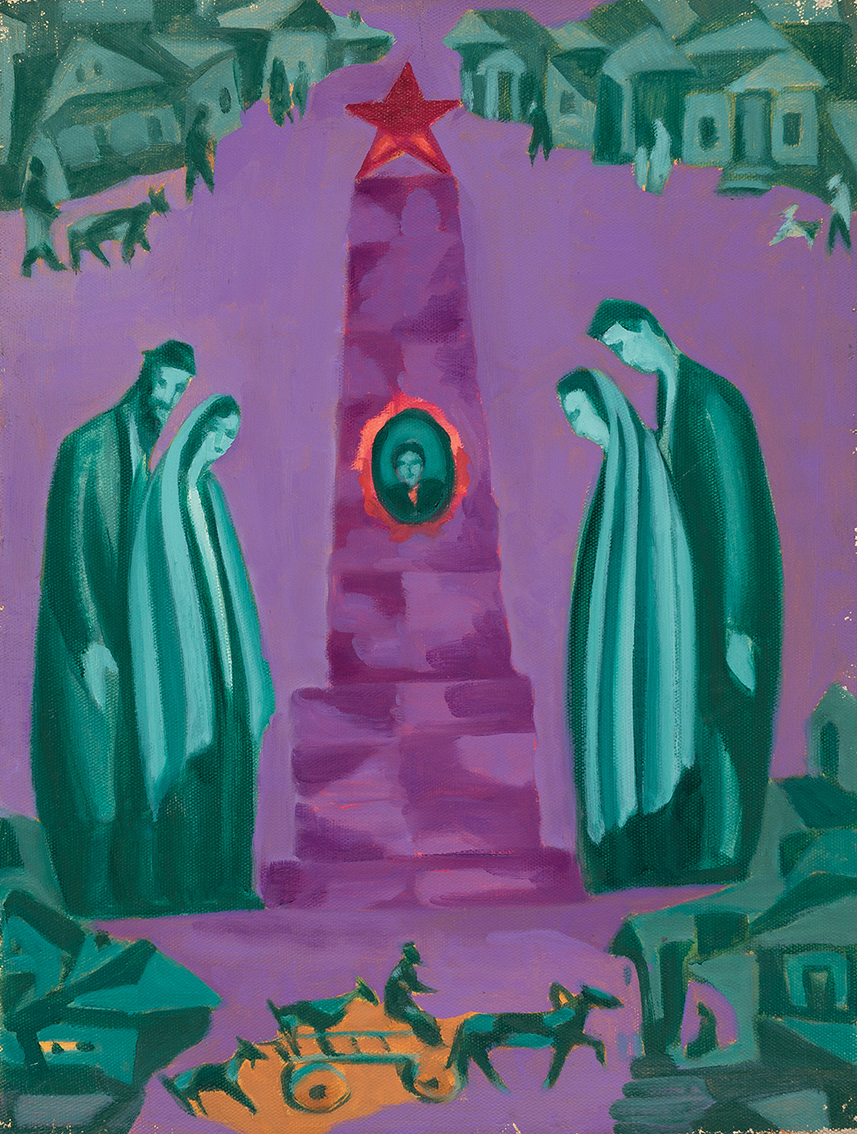Confronting the Soviet and Jewish Worlds
The paintings we have before us express the inner struggle of the world in which Anatoly Kaplan lived. For example, in the foreground of the painting called “Interior”, we see a mother tying the obligatory red pioneer tie atop her daughter’s school uniform. The tie was worn by all Soviet children as a symbol of their membership in the Soviet Communist youth movement. In the background, a bearded man with a tallit on his shoulders. The thick red curtains could be drawn to hide him at a moment’s notice. Created in 1976, toward the end of Kaplan’s life, the painting encapsulates Kaplan’s existence between two worlds: one Soviet, the other Jewish. In Soviet Russia, it was impossible for these two worlds to live side-by-side.
In his works Kaplan addresses universally pertinent issues: how to maintain Jewish tradition in a secular world? Where to find the inner strength to be loyal to Jewish tradition while attempting to acculturate into wider society? These everlasting questions are as relevant today as they were in the difficult world of Soviet Leningrad.


